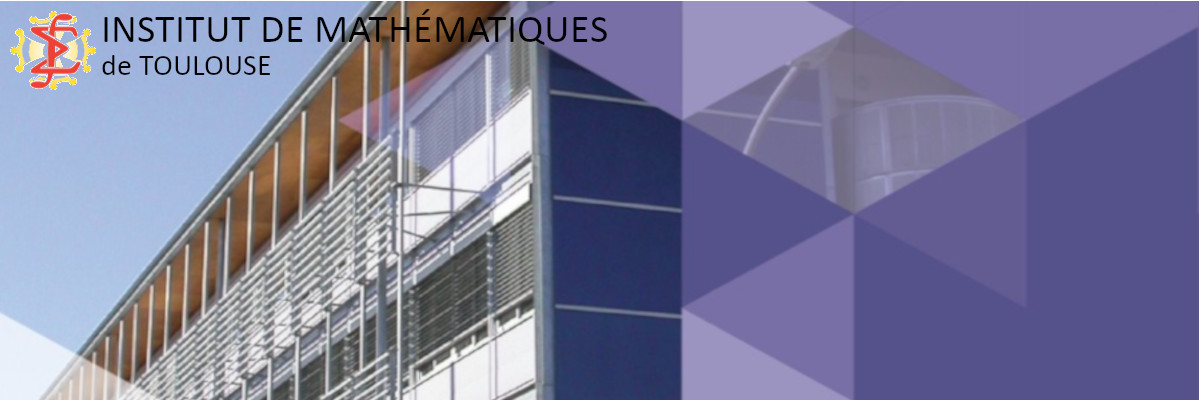Stochastic modeling of aggregation and floculation processes in chemestry
Modélisation stochastique de processus d'agrégation en chimie
Résumé
We center our interest in the Population Balance Equation (PBE). This equation describes the time evolution of systems of colloidal particles in terms of its number density function (NDF) where processes of aggregation and breakage are involved. In the first part, we investigated the formation of groups of particles using the available variables and the relative importance of these variables in the formation of the groups. We use data in (Vlieghe 2014) and exploratory techniques like principal component analysis, cluster analysis and discriminant analysis. We used this scheme of analysis for the initial population of particles as well as in the resulting populations under different hydrodynamics conditions. In the second part we studied the use of the PBE in terms of the moments of the NDF, and the Quadrature Method of Moments (QMOM) and the Generalized Minimal Extrapolation (GME), in order to recover the time evolution of a finite set of standard moments of the NDF. The QMOM methods uses an application of the Product-Difference algorithm and GME recovers a discrete non-negative measure given a finite set of its standard moments. In the third part, we proposed an discretization scheme in order to find a numerical approximation to the solution of the PBE. We used three cases where the analytical solution is known (Silva et al. 2011) in order to compare the theoretical solution to the approximation found with the discretization scheme. In the last part, we proposed a method for estimate the parameters involved in the modelization of aggregation and breakage processes in PBE. The method uses the numerical approximation found, as well as the Extended Kalman Filter. The method estimates iteratively the parameters at each time, using an non- linear Least Square Estimator.
Nous concentrons notre intérêt sur l'Équation du Bilan de la Population (PBE). Cette équation décrit l'évolution, au fil du temps, des systèmes de particules en fonction de sa fonction de densité en nombre (NDF) où des processus d'agrégation et de rupture sont impliqués. Dans la première partie, nous avons étudié la formation de groupes de particules et l'importance relative des variables dans la formation des ces groupes en utilisant les données dans (Vlieghe 2014) et des techniques exploratoires comme l'analyse en composantes principales, le partitionnement de données et l'analyse discriminante. Nous avons utilisé ce schéma d'analyse pour la population initiale de particules ainsi que pour les populations résultantes sous différentes conditions hydrodynamiques. La deuxième partie nous avons étudié l'utilisation de la PBE en fonction des moments standard de la NDF, et les méthodes en quadrature des moments (QMOM) et l'Extrapolation Minimale Généralisée (GME), afin de récupérer l'évolution, d'un ensemble fini de moments standard de la NDF. La méthode QMOM utilise une application de l'algorithme Produit- Différence et GME récupère une mesure discrète non-négative, étant donnée un ensemble fini de ses moments standard. Dans la troisième partie, nous avons proposé un schéma de discrétisation afin de trouver une approximation numérique de la solution de la PBE. Nous avons utilisé trois cas où la solution analytique est connue (Silva et al. 2011) afin de comparer la solution théorique à l'approximation trouvée avec le schéma de discrétisation. La dernière partie concerne l'estimation des paramètres impliqués dans la modélisation des processus d'agrégation et de rupture impliqués dans la PBE. Nous avons proposé une méthode pour estimer ces paramètres en utilisant l'approximation numérique trouvée, ainsi que le Filtre Étendu de Kalman. La méthode estime interactivement les paramètres à chaque instant du temps, en utilisant un estimateur de Moindres Carrés non-linéaire.
Domaines
Modélisation et simulation
Origine : Version validée par le jury (STAR)
Loading...
